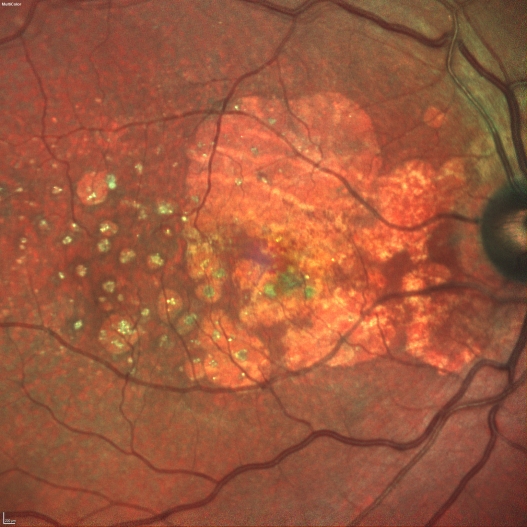The application of systems biology to age-related macular degeneration

Age-related macular degeneration (AMD) is a major cause of blindness in developed countries. It is a complex disease, where genetic (several variants in the complement system, the lipid metabolism, etc.) and broadly defined environmental factors (smoking, diet, exercise, etc.) play a role in disease occurrence
The EYERISK project gathered researchers from different areas (biology, genetics, epidemiology, medicine, etc.) to gain a deeper understanding of the genetic and non-genetic determinants of this disease. The researchers adopted a systems biology approach, whereby mathematical methods where used to model the myriad of factors intervening in biological systems. Therefore, systems biology uses a holistic, wide view and considers simultaneously many parameters and their relationships to disentangle the pathways that lead to, in this case, age-related macular degeneration (AMD). This strategy is far more complicated that the study of isolated factors (for example smoking) and requires computational models.
Using this method, Pool et al 1 created a SBGN (systems biology graphical notation) of AMD pathogenesis. This map showed pathways linked to the disease (complement activation, oxidative stress, autophagy, etc.) with the anatomical location where these processes took place and their interconnections. In addition, PPI (protein-protein interaction) maps where generated and highlighted the relationship between different proteins.
The results from these methods suggested that two different clusters, representing parainflammation (a chronic and low level inflammatory state) and extracellular matrix homeostasis (the processes that regulate a state of balance in the molecules outside cells near the choroid), play a pivotal role in AMD pathogenesis. Of note, energy homeostasis was distributed along the network, suggesting that it is not a specific disease driver per se, but rather a mechanism operating at different levels trying to compensate the effects of aging in the system.
Similarly, Handa et2 discussed the benefits and limitations of a systems biology approach to non-neovascular AMD, the most common form of the disease for which no treatment is currently available. The integration of knowledge generated by the fields of genomics and epidemiology, in vitro and imaging methods, combined with development of proper animal models is a big challenge in terms of infrastructure, data accessibility, integration and interpretation, and require implementation of multidisciplinary teams and strategies. Funding should also be organized accordingly, because grants awarded to small teams may be adequate to answer focused questions, but seem inappropriate to tackle the mechanism behind complex diseases.
It is hoped that these studies provide insights into the mechanisms of the disease. Hopefully, this will serve to develop safe and effective treatments for AMD in the near future.
References:
- Pool FM et al. «Repository of proposed pathways and protein-protein interaction netweorks in age-related macular degeneration». Aging and mechanisms of disease 2020; 6: 1-11.
- Handa JT et al. «A systems biology approach towards understanding and treating non-neovascular age-related macular degeneration». Nat Comm 2019; 10: 3347.
Author: Marc Biarnés OD MPH PhD, member of the Barcelona Macula Foundation (BMF) research team.

EYE-RISK project has received funding from the European Union’s Horizon 2020 programme under grant agreement no 634479.